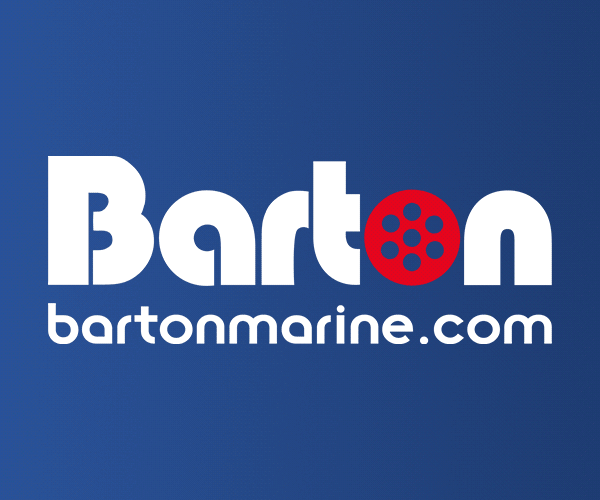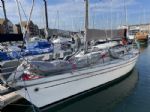











Boats for sale
| Rossiter Pintail Mortagne sur Gironde, near Bordeaux |
 |
| Laser 28 - Excellent example of this great design Hamble le rice |
 |
| Laser 140101 Tynemouth |
 |
List classes of boat for sale |
Taking penalties |
Post Reply 
|
Page 12> |
| Author | ||
Guests 
Guest Group 
|
 Post Options Post Options
 Quote Quote  Reply Reply
 Topic: Taking penalties Topic: Taking penaltiesPosted: 10 Oct 17 at 1:57pm |
|
|
Well, I did all my rule studying when I was sailing toppers and the protest I lost was in toppers (2003). So that tallies. I feel like one of the old blokes who hail 'mast abeam'.
Except in my case I've been meekly waiting to bear away until there is sufficient gap in port takers . A shame, because if there was a hail to go with this action I probably would have been corrected a long time ago.
Edited by mozzy - 10 Oct 17 at 1:59pm |
||
 |
||
Brass 
Really should get out more 
Joined: 24 Mar 08 Location: Australia Online Status: Offline Posts: 1151 |
 Post Options Post Options
 Quote Quote  Reply Reply
 Posted: 10 Oct 17 at 1:41pm Posted: 10 Oct 17 at 1:41pm |
|
Edited by Brass - 10 Oct 17 at 1:44pm |
||
 |
||
Guests 
Guest Group 
|
 Post Options Post Options
 Quote Quote  Reply Reply
 Posted: 10 Oct 17 at 12:05pm Posted: 10 Oct 17 at 12:05pm |
|
|
I found the link by googling "rule 16.2 changes sailing" and it came up as the fourth hit through a ISAF youth sailing worlds link.
Turns are pretty tight in the 200 and happens very quickly. So maybe my issue is I can't imagine a situation where such sudden dialling up wouldn't put a boat in a position of not having room to keep clear I'm still a bit unclear about marks. Bearing down on someone after going around a windward mark kinda feels like a dial down. I.e. P was passing astern, but then S bore away 100 degrees and suddenly P isn't even clearing their bow. Seen any protests about this since the rule change?
Edited by mozzy - 10 Oct 17 at 12:18pm |
||
 |
||
Brass 
Really should get out more 
Joined: 24 Mar 08 Location: Australia Online Status: Offline Posts: 1151 |
 Post Options Post Options
 Quote Quote  Reply Reply
 Posted: 10 Oct 17 at 11:55am Posted: 10 Oct 17 at 11:55am |
|
Edited by Brass - 10 Oct 17 at 12:17pm |
||
 |
||
Guests 
Guest Group 
|
 Post Options Post Options
 Quote Quote  Reply Reply
 Posted: 10 Oct 17 at 11:34am Posted: 10 Oct 17 at 11:34am |
|
|
I agree, I wouldn't normally dial a boat down. But if we were racing for a series and I didn't need to beat them, but just for them to lose a few places I might. Although, hunting a boat on another leg would be against 24.2. Try pasting this link: http://www.worldsailingywc.org/tools/documents/sp_CO_07a-%5B3206%5D.pdf It just provides a bit of the reasoning for the change in rule and also describes the rounding of marks which I was talking about. I lost a protest once on a port layline boat who I bore away into. He had plenty of time to see me bearing away and avoid, but it hinged on the fact I was changing my course and if I didn't change my course he would of passed clear ahead. Since then I have always been weary of bearing away too early, and have delayed pulling the kite in some case until I am clear of port tackers. So, here's a question for you, if you finished your penalty gybing from port to starboard, would dialling up on a port boat be giving them room to keep clear (16.1)? Anyway, I've learnt something, so thanks. I'd tracked all the changes to room at marks and tacking in the zone etc, but was completely unaware of this change. Makes quite a difference to how I approach mark exits in a fleet.
Edited by mozzy - 10 Oct 17 at 11:45am |
||
 |
||
Brass 
Really should get out more 
Joined: 24 Mar 08 Location: Australia Online Status: Offline Posts: 1151 |
 Post Options Post Options
 Quote Quote  Reply Reply
 Posted: 10 Oct 17 at 11:00am Posted: 10 Oct 17 at 11:00am |
|
|
||
 |
||
Guests 
Guest Group 
|
 Post Options Post Options
 Quote Quote  Reply Reply
 Posted: 10 Oct 17 at 9:22am Posted: 10 Oct 17 at 9:22am |
|
|
They might want to do it to force a penalty on another boat?
I've been yielding to boats on port when heading up and bearing away unnecessarily for years (exiting mark roundings)! What happens when a port boat tacks to avoid? Can in that moment the starboard boat bear away and call a penalty? Wouldn't that now be the standard defence when port goes for a lee bow tack? Edit: I've read this now Seems the rule was changed to stop port tack boats on a start as the starboard boats racking up would be heading up and preventing a port boat who was until they headed up, keeping clear. Which seems like a good change.
Edited by mozzy - 10 Oct 17 at 9:42am |
||
 |
||
Brass 
Really should get out more 
Joined: 24 Mar 08 Location: Australia Online Status: Offline Posts: 1151 |
 Post Options Post Options
 Quote Quote  Reply Reply
 Posted: 10 Oct 17 at 12:52am Posted: 10 Oct 17 at 12:52am |
|
For pete's sake, the unconditional (omitting 'pass astern') version of rule 16.2 was the 2001 version of the rule. It was amended in 2005. Yes, S can dial up, but why on earth would she want to? Bearing in mind that rule 16.2 has been deleted for Match Racing since 2001.
|
||
 |
||
Guests 
Guest Group 
|
 Post Options Post Options
 Quote Quote  Reply Reply
 Posted: 09 Oct 17 at 11:41pm Posted: 09 Oct 17 at 11:41pm |
|
|
I can't imagine a situation when you would need to luff someone as you exited your turns. So I only though about port starboard. Being on port you have no right of way. But, reading the new rules, I think you're right. Previously, when a port boat takes avoiding action, the starboard boat couldn't change course so the port boat had to immediately change theirs. Under the new rules that's only the case when the port boat is ducking. RRS 16.2 In addition, when after the starting signal, boats are about to cross or are crossing each other on opposite tacks, and the port-tack boat is keeping clear of the starboard-tack boat, the starboard-tack boat shall not change course if as a result the port-tack boat would immediately need to change course to continue keeping clear." RRS 16.2 In addition, when after the starting signal a port-tack boat is keeping clear by sailing to pass astern of a starboard-tack boat, the starboard-tack boat shall not change course if as a result the port-tack boat would immediately need to change course to continue keeping clear. Does that mean when to reaching boats meet on opposite tack, and the port boat sails higher to avid the starboard, the starboard boat can dial them up? Edited by mozzy - 09 Oct 17 at 11:44pm |
||
 |
||
Brass 
Really should get out more 
Joined: 24 Mar 08 Location: Australia Online Status: Offline Posts: 1151 |
 Post Options Post Options
 Quote Quote  Reply Reply
 Posted: 09 Oct 17 at 10:59pm Posted: 09 Oct 17 at 10:59pm |
|
I don't know what you mean by 'assert those rights'. Either a boat is a right of way boat or it is not. I think you may not be applying rule 16 correctly. Rule 16 is a rule of Section B: it is a limitation on the right of way rules of Section A. It does NOT displace or render the right of way rules inoperable. A right of way leeward boat is perfectly entitled to head up, and a windward boat is required to keep clear: rule 16.1 requires only that, when changing course the leeward boat gives the windward boat room, that is the space, acting promptly and in a seamanlike way to keep clear.
|
||
 |
||
Post Reply 
|
Page 12> |
| Forum Jump | Forum Permissions  You cannot post new topics in this forum You cannot reply to topics in this forum You cannot delete your posts in this forum You cannot edit your posts in this forum You cannot create polls in this forum You cannot vote in polls in this forum |
Bulletin Board Software by Web Wiz Forums® version 9.665y
Copyright ©2001-2010 Web Wiz
Change your personal settings, or read our privacy policy
Copyright ©2001-2010 Web Wiz
Change your personal settings, or read our privacy policy












 Printable Version
Printable Version Delicious
Delicious Digg
Digg Facebook
Facebook Furl
Furl Google
Google MySpace
MySpace Newsvine
Newsvine reddit
reddit StumbleUpon
StumbleUpon Twitter
Twitter Windows Live
Windows Live Yahoo Bookmarks
Yahoo Bookmarks Topic Options
Topic Options